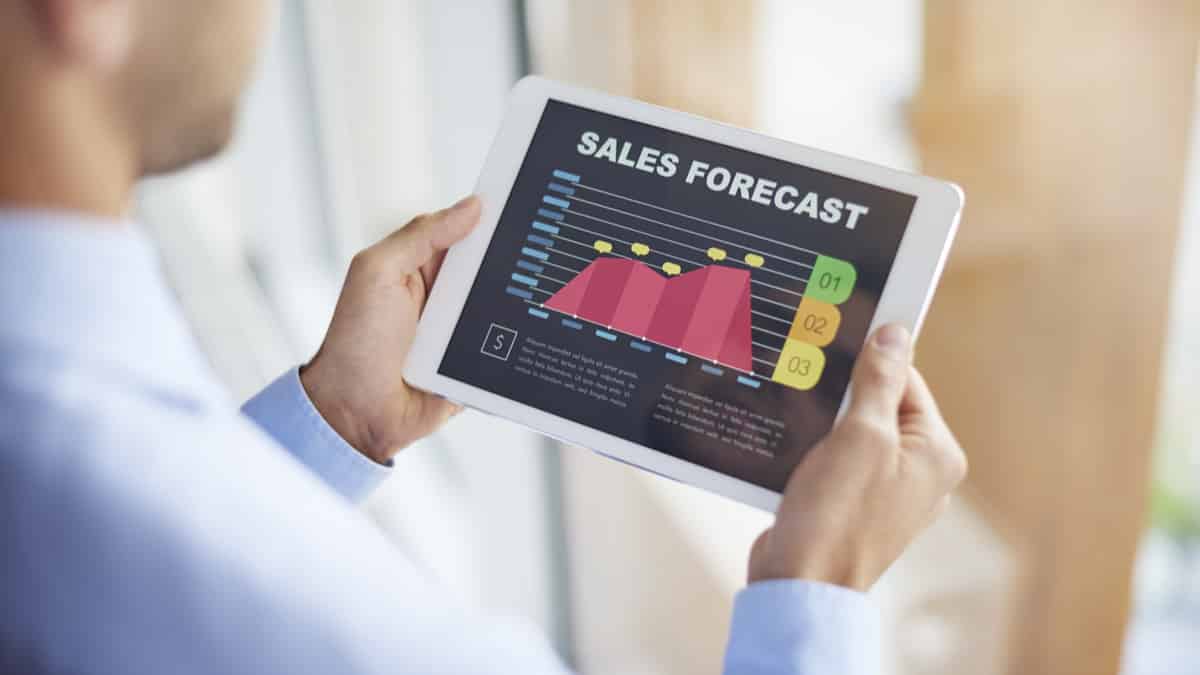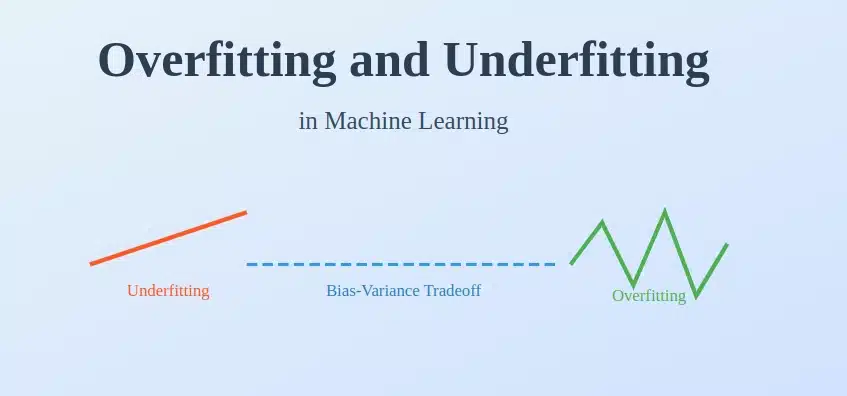Machine learning helps increase sales conversions because it has revolutionised the ways of selling. Machine learning tools will be able to scope out, act on and complete high-potential sales much better than human representatives at a faster, more scalable pace.
The benefits of machine learning are not lost on high-performing sales teams– they’re 4.1 times more likely to use machine learning than their lower-performing counterparts.
Top three ways in which Machine Learning is leveraged in Sales are given below
- Insights into highest-potential opportunities
- Prioritising leads for stronger and more customised sales approaches
- Forecasting sales and demand well into the future
What is sales forecasting?
Sales forecasting is defined as the system by which future sales volumes are estimated. In specific, it identifies how much of a product will sell during a certain future period, in what market and at what price. It promotes and facilitates the making of informed business decisions by predicting short-term performances and those over the long run.
Aside from predicting sales, this method of forecasting is also valuable in garnering insights into how workforces, resources and cash flows should be managed by a firm. This is crucial to allocate internal resources efficiently to capitalise on predictions or trends and is also a key performance indicator for firms looking to collate investment capital.
Sales forecasts are typically based on data collected over the years, trends in the industry and the current status of the sales pipeline. That said, these forecasts are best treated as a baseline to work on rather than a firm prediction and can be used to anticipate weekly, monthly, quarterly or yearly sales revenue.
One of the foremost prerequisites for accurate sales forecasting is good data spanning years (in the case of an existing business). Newer companies that don’t have enough data to form accurate predictions can instead rely on industry trends and averages. Other key data points include:
- A clear-cut sales process
- Individual and team sales quotas to compare with the subsequent sales forecast
- Basic sales metrics e.g. average deal size, customer acquisition costs, conversion rates
- Expected revenues from the current sales pipeline
- Customer Relationship Management (CRM) metrics
Why is sales forecasting important for both big and small businesses?
Regardless of the size of the company, sales forecasting allows firms to:
- Envision future sales revenues
- Allocate human and monetary resources according to forecasts
- Prepare strategies geared towards future growth
Capital for Small Businesses
For small businesses or fresh startups looking to take off, sales forecasting is just as important. These businesses need startup capital, investments and loans to make purchases necessary to get them off the ground, including office space, technology and forming the core team. The business plan that is created to pitch to investors has sales forecasting at its heart– based not on non-existent past numbers but data gleaned from competitors in similar fields.
Measuring the Company Health
As a company continues to grow, sales forecasts evolve from investment-pullers to indicators of the organisation’s overall health. Even Wall Street measures the success of a company by how easily it meets quarterly sales forecasts. Generating revenues that are lesser than the forecasted number is, in their view, a signal to stockholders about the poor performance of the company and maybe even the management’s lack of ownership.
Planning of Supply based on Demand
An accurate sales forecast that is based on conclusive databases can help firms identify the interest in current products or services and predict the same for future ventures. Using this forecast, firms can also increase or reduce supply to meet demand and in the process make revenues without surplus.
Buildin Marketing Plans
Sales forecasts are of utmost importance to any firm’s marketing team. Judging by how well or poor the forecast looks, marketers can then ramp up their campaigns, target them better, rethink product positioning or re-evaluate the market. Forecasts also help plan out marketing budgets on a quarterly or yearly basis and serve as a benchmark number, the achievement of which will be the aim of the campaigns.
How was sales Forecasting done Traditionally?
There are plenty of conventional methods that many firms still use today to carry out sales forecasting. Of these methods, two or more could be used together to form a layered approach. This allows for more accuracy than when using just a single method.
Opinions of the Sales Team
Sales representatives are most likely to know how much individual deals close for, how long they will take to close and what stakes they are playing for. This is why many companies choose to go by their sales team’s opinion when creating a sales forecast. However, the drawbacks of this method are:
- Forecasting relies heavily on opinion more than concrete data
- The sales forecast may be overestimated or underestimated as a result
- There is no clear-cut process that can be repeated to create forecasts consistently
Past Data and Records
Another method of sales forecasting is using past data from a specific period to evaluate how the company will perform during similar conditions in the future. Calculating how much the revenue was this time last year and factoring in year-on-year growth percentages is one of the ways firms like to carry out this approach. Despite being based on accurate, recorded data, this method is not all that successful in taking into account the difference in the environment between then and now. External factors include:
- Number of sales reps
- Diversified products
- Competitor performance
- Increase or decrease in competitors
- Market trends and industry environment
Deal Stages
This method of sales forecasting involves assigning a probability of successfully closing a deal to each stage of the sales process, then multiplying that probability by the size of a given opportunity to generate a revenue estimate. Known for its simplicity, this forecasting method remains one of the more popular approaches. However, the drawback is that the age of the opportunity, i.e. the time from when the opportunity first came about to now, is not considered in this method, despite being a critical influencing factor.
How can Machine Learning Predict Demand?
Granted, humans do not have set patterns of buying and consuming. However, with the backing of datasets spanning years into the past, it is highly possible to identify patterns in sales and consumption. This can be done on an individual basis or focus on a target group or demographic. Machine learning features here because of its ability to mine through years of data to spot patterns and repetitive behaviour, which can then be leveraged to forecast sales and demand.
Probability is the foundation of most machine learning algorithms– even in situations of sales forecasting, probability algorithms are the key to envisioning certainty well into the future. The base of probability is that the likelihood of an event occurring can either be 0 or 1, which is to say impossible or certain.
The algorithms take into account all external and internal influential factors that go into the sales process and the likelihood of the said process being a success. This type of ‘what if’ analysis allows sales leaders to understand the impact of these factors on sales numbers and evaluate how to use these insights as levers to have a greater positive impact on sales.
Other Machine Learning Methods for Predicting demand Include
- Bayesian models for time series forecasting, including predictors such as marketing expenditure and industry trends
- Classification algorithms carried out on open opportunities to evaluate the current sales pipeline
It is crucial for all these algorithms to be customisable due to the mere nature of sales and the number of influential factors that converge to make or break a sales deal.
Examples of Machine Learning in sales forecasting
One of the world’s foremost tobacco companies needed to optimise marketing spends and processes, as well as increase the sales per amount spent on advertisements and product promotion in the local market. The solution was a regression analysis based on year-on-year comparisons. The solution process also simulated different marketing scenarios and results to identify the optimal marketing strategy in real-life conditions. With the focus being on Point of Sale (POS), the machine learning-based solution looked to automate pricing model analysis, more effective campaign targeting and sales planning based on demand forecasts.
If you want to improve your supply chain’s demand forecasting, consider taking a course on Demand forecasting in Supply chain. The course is designed to help you predict future demand and better manage your inventory and resources. A forecasting course can also help you avoid stockouts and other supply chain issues.
Aside from forecasting, machine learning also revolutionises sales tactics and teams in general. For starters, the pattern recognition abilities ensure that sales teams spot opportunities with the highest potential by building data profiles based on their current best customers.
Machine learning-driven insights into the performance of the top 10% of salespeople are invaluable in strengthening the team. This is especially beneficial when sales performances vary widely, and can also be extended to recruitment and setting expectations to ensure steady performances in coming years.
The overplayed trope of the ‘death of the salesman’ is often attributed to the fact that machine learning and other emerging technologies are fast gaining momentum in the field. However, machine learning, when considered an aid to salespeople rather than a hindrance, will orchestrate better business plans and increase the likelihood of successfully closed deals. If you are intrigued with the scope of Machine Learning and want to pursue a career in this field, then upskill with Great Learning’s PG program in Machine Learning.









